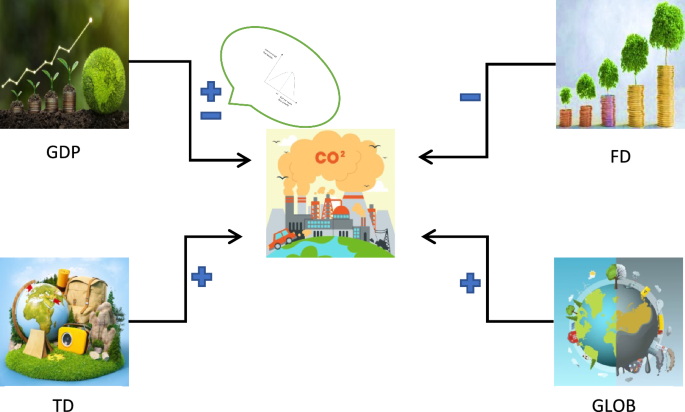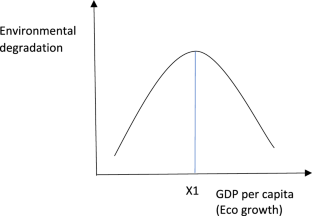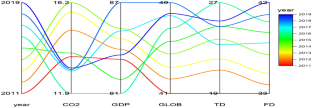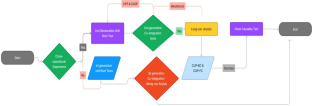Abstract
The intricate relationship between environment, globalization, and tourism has sparked captivating debates among researchers. Current work aims to explore the combined effects GDP, GDP squre(Kuznets curve) globalization, tourism development and financial development on carbon dioxide (CO2) emissions. In particular, the validity of the environmental Kuznets curve hypothesis within the SAARC region during 1995–2022 is investigated. To discern the long-term relationship between the variables, advanced estimators, namely continuous-updated fully modified and continuously updated and bias-corrected models, are employed. Findings indicate that globalization and tourism development contribute to increased emissions, while financial development helps in mitigating carbon emissions. It is emphasized that comprehensive changes encompassing economic, social, and political aspects are imperative to effectively curb emissions in the South Asian Association for Regional Cooperation (SAARC) region. Policy makers should give careful attention to regional trade patterns, and the decision-makers of the SAARC countries are suggested to establish robust governmental and statutory frameworks to support sustainable tourism development. Furthermore, fostering financial development, particularly in the financial and private sectors, holds potential for addressing environmental degradation effectively.
Graphical abstract


Source Built by authors based on Awan and Azam (2022)

Source Author’s own compilation

Source Author’s own compilation


Source Computed by authors based on Granger causality results by using Vensim software
Similar content being viewed by others
Data availability
The data and materials used in this study are available upon request.
References
Ahmed, M., Shuai, C., & Ahmed, M. (2023). Analysis of energy consumption and greenhouse gas emissions trend in China, India, the USA, and Russia. International Journal of Environmental Science and Technology, 20(3), 2683–2698.
Alesina, A., & Perotti, R. (1996). Income distribution, political instability, and investment. European Economic Review, 40(6), 1203–1228.
Al-Mulali, U., Fereidouni, H. G., Lee, J. Y., & Sab, C. N. B. C. (2013). Exploring the relationship between urbanization, energy consumption, and CO2 emission in MENA countries. Renewable and Sustainable Energy Reviews, 23, 107–112.
Awan, A. M., & Azam, M. (2022). Evaluating the impact of GDP per capita on environmental degradation for G-20 economies: Does N-shaped environmental Kuznets curve exist? Environment, Development and Sustainability. https://doi.org/10.1007/s10668-021-01899-8
Awan, A. M., Azam, M., Saeed, I. U., & Bakhtyar, B. (2020). Does globalization and financial sector development affect environmental quality? A panel data investigation for the middle East and North African countries. Environmental Science and Pollution Research, 27(36), 45405–45418.
Ayhan, F., Kartal, M. T., Kılıç Depren, S., & Depren, Ö. (2023). Asymmetric effect of economic policy uncertainty, political stability, energy consumption, and economic growth on CO2 emissions: Evidence from G-7 countries. Environmental Science and Pollution Research, 30(16), 47422–47437.
Azam, M. (2016). Does environmental degradation shackle economic growth? A panel data investigation on 11 Asian countries. Renewable and Sustainable Energy Reviews, 65, 175–182.
Azam, M., & Awan, A. M. (2022). Health is wealth: A dynamic SUR approach of examining a link between climate changes and human health expenditures. Social Indicators Research, 163(2), 505–528.
Bai, J., & Kao, C. (2006). On the estimation and inference of a panel cointegration model with cross-sectional dependence. Contributions to Economic Analysis, 274, 3–30.
Bai, J., Kao, C., & Ng, S. (2009). Panel cointegration with global stochastic trends. Journal of Econometrics, 149(1), 82–99.
Bai, J., & Ng, S. (2002). Determining the number of factors in approximate factor models. Econometrica, 70(1), 191–221.
Bilgili, F., Koçak, E., & Bulut, Ü. (2016). The dynamic impact of renewable energy consumption on CO2 emissions: A revisited environmental Kuznets curve approach. Renewable and Sustainable Energy Reviews, 54, 838–845.
Boubellouta, B., & Kusch-Brandt, S. (2021). Cross-country evidence on environmental Kuznets curve in waste electrical and electronic equipment for 174 countries. Sustainable Production and Consumption, 25, 136–151.
Breusch, T. S., & Pagan, A. R. (1980). The Lagrange multiplier test and its applications to model specification in econometrics. The Review of Economic Studies, 47(1), 239–253.
Butler, R. W. (1980). The concept of a tourist area cycle of evolution: Implications for management of resources. Canadian Geographer/le Géographe Canadien, 24(1), 5–12.
Dawson, J., Stewart, E. J., Lemelin, H., & Scott, D. (2010). The carbon cost of polar bear viewing tourism in Churchill, Canada. Journal of Sustainable Tourism, 18(3), 319–336.
Dreher, A. (2006). Does globalization affect growth? Evidence from a new index of globalization. Applied Economics, 38(10), 1091–1110.
Dumitrescu, E.-I., & Hurlin, C. (2012). Testing for Granger non-causality in heterogeneous panels. Economic Modelling, 29(4), 1450–1460.
Galor, O., & Moav, O. (2004). From physical to human capital accumulation: Inequality and the process of development. The Review of Economic Studies, 71(4), 1001–1026.
Garidzirai, R., & Moyo, C. (2020). Tourism, poverty and carbon emissions in newly industrialized countries. Journal of Environmental Management & Tourism, 11(3–43), 653–668.
Gössling, S. (2000). Sustainable tourism development in developing countries: Some aspects of energy use. Journal of Sustainable Tourism, 8(5), 410–425.
Grossman, G. M., & Krueger, A. B. (1991). Environmental impacts of a North American free trade agreement. National Bureau of economic research Cambridge.
Grossman, G. M., & Krueger, A. B. (1995). Economic growth and the environment. The Quarterly Journal of Economics, 110(2), 353–377.
Gunarathne, A. N., Kaluarachchilage, P. K. H., & Rajasooriya, S. M. (2020). Low-carbon consumer behaviour in climate-vulnerable developing countries: A case study of Sri Lanka. Resources, Conservation and Recycling, 154, 104592.
İnal, V., Addi, H. M., Çakmak, E. E., Torusdağ, M., & Çalışkan, M. (2022). The nexus between renewable energy, CO2 emissions, and economic growth: Empirical evidence from African oil-producing countries. Energy Reports, 8, 1634–1643.
Jahanger, A. (2022). Impact of globalization on CO2 emissions based on EKC hypothesis in developing world: The moderating role of human capital. Environmental Science and Pollution Research, 29(14), 20731–20751.
Khan, A., Chenggang, Y., Hussain, J., Bano, S., & Nawaz, A. (2020). Natural resources, tourism development, and energy-growth-CO2 emission nexus: A simultaneity modeling analysis of BRI countries. Resources Policy, 68, 101751.
Khan, M. T., & Imran, M. (2023). Unveiling the carbon footprint of Europe and Central Asia: Insights into the impact of key factors on CO2 emissions Published. Archives of the Social Sciences: A Journal of Collaborative Memory, 1, 52–66.
Khan, S., Azam, M., Ozturk, I., & Saleem, S. F. (2022). Analysing association in environmental pollution, tourism and economic growth: Empirical evidence from the commonwealth of independent states. Journal of Asian and African Studies, 57(8), 1544–1561.
Khurshid, A., Khan, K., Saleem, S. F., Cifuentes-Faura, J., & Calin, A. C. (2023). Driving towards a sustainable future: Transport sector innovation, climate change and social welfare. Journal of Cleaner Production, 427, 139250.
Koçak, E., Ulucak, R., & Ulucak, Z. Ş. (2020). The impact of tourism developments on CO2 emissions: An advanced panel data estimation. Tourism Management Perspectives, 33, 100611.
Kuznets, S. (1955). Economic growth and income inequality. The American Economic Review, 45(1), 1–28.
Lee, C.-C., & Chang, C.-P. (2008). Tourism development and economic growth: A closer look at panels. Tourism Management, 29(1), 180–192.
Lee, J. W., & Brahmasrene, T. (2013). Investigating the influence of tourism on economic growth and carbon emissions: Evidence from panel analysis of the European union. Tourism Management, 38, 69–76.
Liu, M., Ren, X., Cheng, C., & Wang, Z. (2020). The role of globalization in CO2 emissions: A semi-parametric panel data analysis for G7. Science of the Total Environment, 718, 137379.
Lv, Z., & Li, S. (2021). How financial development affects CO2 emissions: A spatial econometric analysis. Journal of Environmental Management, 277, 111397.
Martial, A. A. A., Dechun, H., Voumik, L. C., Islam, M. J., & Majumder, S. C. (2023). Investigating the influence of tourism, GDP, renewable energy, and electricity consumption on carbon emissions in low-income countries. Energies, 16(12), 4608.
Mehmood, U. (2022). Biomass energy consumption and its impacts on ecological footprints: Analyzing the role of globalization and natural resources in the framework of EKC in SAARC countries. Environmental Science and Pollution Research, 29(12), 17513–17519.
Mishra, S., Tewari, I., & Toosi, S. (2020). Economic complexity and the globalization of services. Structural Change and Economic Dynamics, 53, 267–280.
Muhammad, F., Khan, A., Razzaq, N., & Karim, R. (2021). Influence of tourism, governance, and foreign direct investment on energy consumption and CO2 emissions: A panel analysis of Muslim countries. Environmental Science and Pollution Research, 28(1), 416–431.
Okafor, L. E., Khalid, U., & Burzynska, K. (2022). Does the level of a country’s resilience moderate the link between the tourism industry and the economic policy response to the COVID-19 pandemic? Current Issues in Tourism, 25(2), 303–318.
Pesaran, H. (2004). General diagnostic tests for cross-sectional dependence in panels (p. 435). University of Cambridge.
Pesaran, M. H. (2007). A simple panel unit root test in the presence of cross-section dependence. Journal of Applied Econometrics, 22(2), 265–312.
Rehman, A., Alam, M. M., Ozturk, I., Alvarado, R., Murshed, M., Işık, C., & Ma, H. (2023). Globalization and renewable energy use: How are they contributing to upsurge the CO2 emissions? A global perspective. Environmental Science and Pollution Research, 30(4), 9699–9712.
Rogelj, J., & Schleussner, C.-F. (2019). Unintentional unfairness when applying new greenhouse gas emissions metrics at country level. Environmental Research Letters, 14(11), 114039.
Rogers, R., Hassler, E., Carey, Q., & Cazier, J. (2023). More time to fly: With a warming climate the Western honey bee (Apis mellifera, Linnaeus) now has more temperature-eligible flight hours than 40 years ago. Journal of Apicultural Research, 62(3), 615–624.
Saint Akadiri, S., Lasisi, T. T., Uzuner, G., & Akadiri, A. C. (2019). Examining the impact of globalization in the environmental Kuznets curve hypothesis: The case of tourist destination states. Environmental Science and Pollution Research, 26(12), 12605–12615.
Shafik, N., & Bandyopadhyay, S. (1992). Economic growth and environmental quality: Time-series and cross-country evidence (Vol. 904). World Bank Publications.
Shahbaz, M., Khan, S., Ali, A., & Bhattacharya, M. (2017). The impact of globalization on CO2 emissions in China. The Singapore Economic Review, 62(04), 929–957.
Stern, D. I. (2004). The rise and fall of the environmental Kuznets curve. World Development, 32(8), 1419–1439.
Stiglitz, J. E. (1969). Distribution of income and wealth among individuals. Econometrica: Journal of the Econometric Society, 37, 382–397.
Streimikiene, D., & Bilan, Y. (2015). Review of rural tourism development theories. Transformations in Business & Economics, 14(2), 21–34.
Tomlinson, J. (1999). Globalization and culture. University of Chicago Press.
Toye, J. F. (2003). Trade and development: Directions for the 21st century. Edward Elgar Publishing.
UNWTO (2022). International Tourism Highlights. United Nations World Tourism Organization https://www.unwto.org/
Voumik, L. C., Hossain, M. I., Rahman, M. H., Sultana, R., Dey, R., & Esquivias, M. A. (2023a). Impact of renewable and non-renewable energy on EKC in SAARC countries: Augmented mean group approach. Energies, 16(6), 2789.
Voumik, L. C., Islam, M. A., & Nafi, S. M. (2023). Does tourism have an impact on carbon emissions in Asia? An application of fresh panel methodology. Environment, Development and Sustainability. https://doi.org/10.1007/s10668-023-03104-4
Wang, L., Peng, C., Shi, W., & Zhu, M. (2020). Carbon dioxide emissions from port container distribution: Spatial characteristics and driving factors. Transportation Research Part d: Transport and Environment, 82, 102318.
WDI (2023). World development indicators. http://www.wdi.org/
Westerlund, J. (2008). Panel cointegration tests of the fisher effect. Journal of Applied Econometrics, 23(2), 193–233.
Westerlund, J., & Edgerton, D. L. (2007). A panel bootstrap cointegration test. Economics Letters, 97(3), 185–190.
Zafar, M. W., Saud, S., & Hou, F. (2019). The impact of globalization and financial development on environmental quality: Evidence from selected countries in the organization for economic co-operation and development (OECD). Environmental Science and Pollution Research, 26(13), 13246–13262.
Zaidi, S. A. H., Zafar, M. W., Shahbaz, M., & Hou, F. (2019). Dynamic linkages between globalization, financial development and carbon emissions: Evidence from Asia pacific economic cooperation countries. Journal of Cleaner Production, 228, 533–543.
Funding
The authors declare that no funds, grants, or other support were received during the preparation of this manuscript.
Author information
Authors and Affiliations
Contributions
All authors contributed to the study conception and design. Material preparation and data collection were performed by SFS, the analysis and first draft of the manuscript were written by AMA, and proofreading and language improvement were done by SK. All authors read and approved the final manuscript.
Corresponding author
Ethics declarations
Conflict of interest
The authors have no relevant financial or non-financial interests to disclose.
Ethical approval
The research study titled, “environmental Kuznets curve in the SAARC region: investigating panel co-integration with global stochastic trends,” conducted by Abdul Majid Awan and the research team, has received full ethical approved confirming compliance with all necessary ethical standards and protocols.
Consent of participate
I confirm my voluntary participation in the research study titled “environmental Kuznets curve in the SAARC region: investigating panel co-integration with global stochastic trends,” conducted by Abdul Majid Awan and the research team.
Consent of publication
I give consent for the publication of my research findings in the study titled “environmental Kuznets curve in the SAARC region: investigating panel co-integration with global stochastic trends,” conducted by Abdul Majid Awan and the research team.
Additional information
Publisher's Note
Springer Nature remains neutral with regard to jurisdictional claims in published maps and institutional affiliations.
Rights and permissions
Springer Nature or its licensor (e.g. a society or other partner) holds exclusive rights to this article under a publishing agreement with the author(s) or other rightsholder(s); author self-archiving of the accepted manuscript version of this article is solely governed by the terms of such publishing agreement and applicable law.
About this article
Cite this article
Awan, A.M., Saleem, S.F. & Khan, S. Navigating sustainable development: exploring the environmental Kuznets curve in the SAARC region with global stochastic trends. Environ Dev Sustain (2024). https://doi.org/10.1007/s10668-024-04505-9
Received:
Accepted:
Published:
DOI: https://doi.org/10.1007/s10668-024-04505-9




